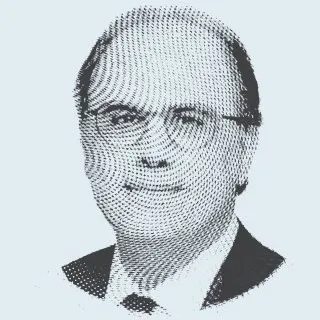The heyday of the new atheism in Western life, when anti-God tracts by Richard Dawkins and Christopher Hitchens bestrode best-seller lists, did not arrive because brilliant new arguments for God’s nonexistence were suddenly discovered.
Rather, it arrived because specific events and deeper forces made the time ripe for unbelief — because the early internet served as a novel transmission belt for skepticism, because Sept. 11 advertised the perils of religious fundamentalism, because the Catholic Church’s sex abuse crisis undermined the West’s strongest bastion of organized Christianity and because the digital-era retreat from authority and institutions hit religious institutions first.
Such an opportunity confronts religious writers today. The new-atheist idea that the weakening of organized religion would make the world more rational and less tribal feels much more absurd in 2024 than it did in 2006.
Existential anxiety and civilizational ennui, not rationalist optimism and humanist ambition, are the defining moods of secular liberalism nowadays. The decline of religious membership and practice is increasingly seen as a social problem rather than a great leap forward. People raised without belief are looking for meaning in psychedelics, astrology, U.F.O.s. And lately the rise of the “Nones” — Americans with no religious affiliation — has finally leveled off.
So the world seems primed for religious arguments in the same way it was primed for the new atheists 20 years ago. But the question is whether the religious can reclaim real cultural ground — especially in the heart of secularism, the Western intelligentsia — as opposed to just stirring up a vague nostalgia for belief.
It’s one thing to get nonbelievers to offer kind words. The challenge is to go further, to persuade anxious moderns that religion is more than merely pragmatically useful, more than just a wistful hope — that a religious framework actually makes much more sense of reality than the allegedly hardheaded materialist alternative.
I have skin in this game, since I will be offering my own attempt at persuasion next year. But the past few months have brought three religious books that enter this debate — covering the philosophical, the scientific and the experiential cases for a religious perspective on the world.
The philosophical case comes from the polymathic philosopher-theologian David Bentley Hart. His new book is “All Things Are Full of Gods: The Mysteries of Mind and Life,” the culmination of decades of argument against the new atheists and all reductive accounts of human consciousness.
Whereas “All Things Are Full of Gods” is written in the form of a Platonic dialogue (!) among a group of retired Greek deities, and arguing with one another about contemporary mortal debates in philosophy of mind and neuroscience and information theory.
The dialogical format does have one great advantage, though: It requires Hart to give extended space to ideas that he’s famous for treating with, well, Olympian disdain. Through the god Hephaestus, to whom he assigns the skeptical and anti-supernatural part, you get an extended elaboration of the arguments that mind and self and thought are reducible to mindless matter.
If you think this sounds like interesting philosophical noodling but also fundamentally anti-scientific, you can turn to the next book in my trio, Spencer Klavan’s “Light of the Mind, Light of the World,” which is an argument that the development of modern science supplies laboratory evidence for the primacy of mind.
This is not just the familiar case that the fine-tuning of the universe is proof that some Divine Intelligence set the whole thing up. It’s an argument that the materialist model of the universe as a closed physical system, in which units of matter bounce around like billiard balls, has been overthrown by the quantum revolution — which demonstrated, to the bafflement of many scientists, that probabilities only collapse into reality itself when a conscious mind is there is to measure and observe.
Klavan argues that really reckoning with this discovery should force a decisive choice. Which is why the other choice is preferable, if you really trust the science: Accept that there is only one reality and that it’s “created when consciousness gives shape to time and space” — created in some sense every time we look upon it, and created fundamentally by the Power that said let there be light in the first place.
This is wild stuff from a materialist perspective, but in my experience with open-minded skeptics, it’s not the place where they hit their limit. That’s more likely to happen when you proceed one step further, into the territory of the real old-time religion, and start talking about the more personalized and unpredictable ways that supernatural mind might shape material reality — the realm of miracles and revelations, visions and portents, legit angels and real demons.
This realm is the subject of the last book in my troika, Rod Dreher’s “Living in Wonder: Finding Mystery and Meaning in a Secular Age.” It’s partly a collection of anecdata about the persistence of enchantment even under allegedly disenchanted conditions, the supernatural happenings that flower constantly in our notionally secularized world.
This means that of the three, the Dreher book is the most fun, it tells the best stories, and it covers aspects of human life that are more fundamental to religion’s resilience than any argument or theory — above all, the fact that even in societies that exclude any hint of supernaturalism from their systems of official knowledge, strange experiences just keep on breaking in.
From the religious perspective, of course — Hart’s and Klavan’s no less than Dreher’s — it’s all the same God. So the test for all their arguments is whether a world that’s unhappy in its unbelief can be pushed all the way to this conclusion — or whether contemporary disillusionment with secularism is enough to draw people to the threshold of religion, but something more than argument is required to pull them through.
The New York Times











